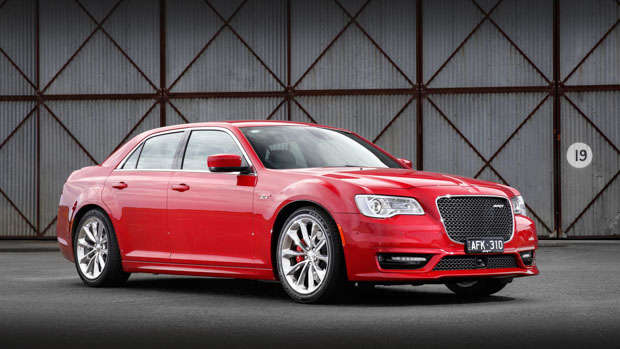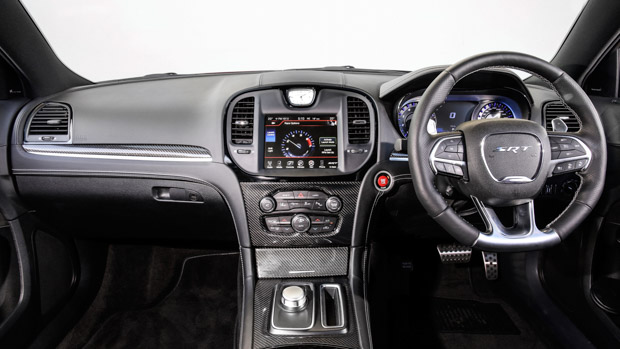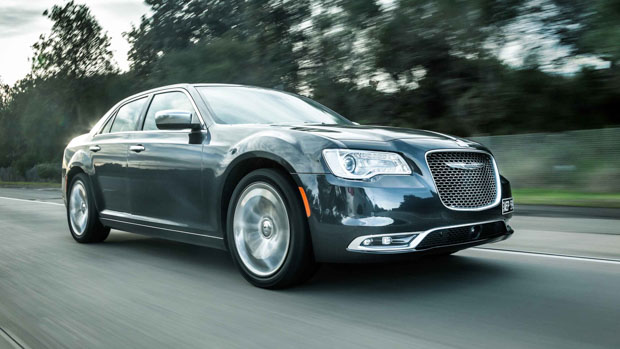-
Car Reviews
- Car News
-
Car Comparisons
Latest comparisons
- Chasing Deals
Just when you thought it was dead, the Chrysler 300 is back for more – and not just the 300C Luxury, the V8 SRT as well!
Despite rumours to the contrary, the Chrysler 300 is set to continue in Australia for the time being, with another batch of cars due to arrive before the end of the year, including some V8-engined SRT models.
That means both the 300C Luxury with its 210kW 3.6-litre ‘Pentastar’ V6 and loaded equipment list, and the 300 SRT with its ball-tearing 350kW 6.4-litre V8 and 282km/h top speed, will live to see another day … for now.
The SRT was rumoured to have finished in this country, with a sizeable batch bought by police highway-patrol departments in New South Wales and Queensland, but Chrysler’s communications and public affairs director Tracie Stoltenburg confirmed that these forthcoming SRTs are for public consumption.
While an MY22 update has been confirmed for the Chrysler 300 in the US, focusing on equipment updates to lower-grade models not sold in Australia, its future remains uncertain – both here and abroad.
Reports out of America – namely an Automotive News article discussing the future of the Chrysler 300 – suggest that the luxury sedan could reach the end of the line in 2023.
With electrification high on the list of priorities for Stellantis, and with the current Chrysler 300 now being 10 years old (and riding on an even older platform), its future remains unclear.
Back when the latter-day Chrysler 300 was the showpiece for hip-hop videos, or just about any music video really, it sold in huge numbers. After debuting as a concept at the 2003 New York motor show, the rear-drive 300 caused such a sensation that Chrysler had a production model ready to go late in the year.
In its first full year on sale in the US (2004), the Chrysler 300 achieved an impressive 112,930 sales, and reached its peak the following year with 144,068 sales. But by 2008, annual sales were below 100,000 and it would never get close again.
The 300’s best year since its 2005/06 heyday was in 2012, following the launch of the (still-current) second-generation model, with 70,747 sales. And while the 300’s popularity remained relatively consistent in the US throughout the 2010s – more so than the first-gen car, with over 50,000 sales every year until 2018 – the last few years have been tough.
In 2019, US sales fell to 29,213 cars, then 16,653 in 2020, and just over 11,000 for the first half of ’21.
The Chrysler mob in Australia spent many years trying to work out how to get a right-hand-drive Dodge Charger available in our market but it sadly never came to anything.
The latter-day Charger was revived not long after the 300 (in 2005), sharing its four-door sedan bodystyle and Mercedes-Benz-derived underpinnings (from the W211 E-Class), and has also since gone through two generations.
Initially, the 300 easily outsold the Charger (its best year being 119,289 sales in 2007), but right when 300 sales nosedived in 2009, the Dodge Charger just kept on selling – especially the hot-looking second-gen car with its hardcore performance variants.
Even in 2019, Dodge sold 96,935 Chargers, with numbers dipping to a still-decent 77,425 in Covid-ravaged 2020. No wonder its medium-term future seems assured.
Likewise the closely related Challenger coupe, which first launched in the US in 2007. Its volumes have remained consistently buoyant, and not that far behind the Charger sedan!
Going forward, however, Dodge is expected to transition into an electric muscle-car brand post-2024, with the perfect model name for that transformation – Charger!
Chrysler sold 26 cars in August, and 123 year-to-date in 2021, which is a moderate drop from the 179 cars it had sold to the same point in 2020.
But that’s a long way behind the Chrysler 300’s best in this country. In 2013, the first full year after the second-generation model launched, the 300 managed 2508 sales in Australia.
Annual volume dropped below 1000 sales in 2015, and finished the year with 218 sales in 2020.
All prices are before on-road costs.
Latest news
About Chasing cars
Chasing Cars reviews are 100% independent.
Because we are powered by Budget Direct Insurance, we don’t receive advertising or sales revenue from car manufacturers.
We’re truly independent – giving you Australia’s best car reviews.


